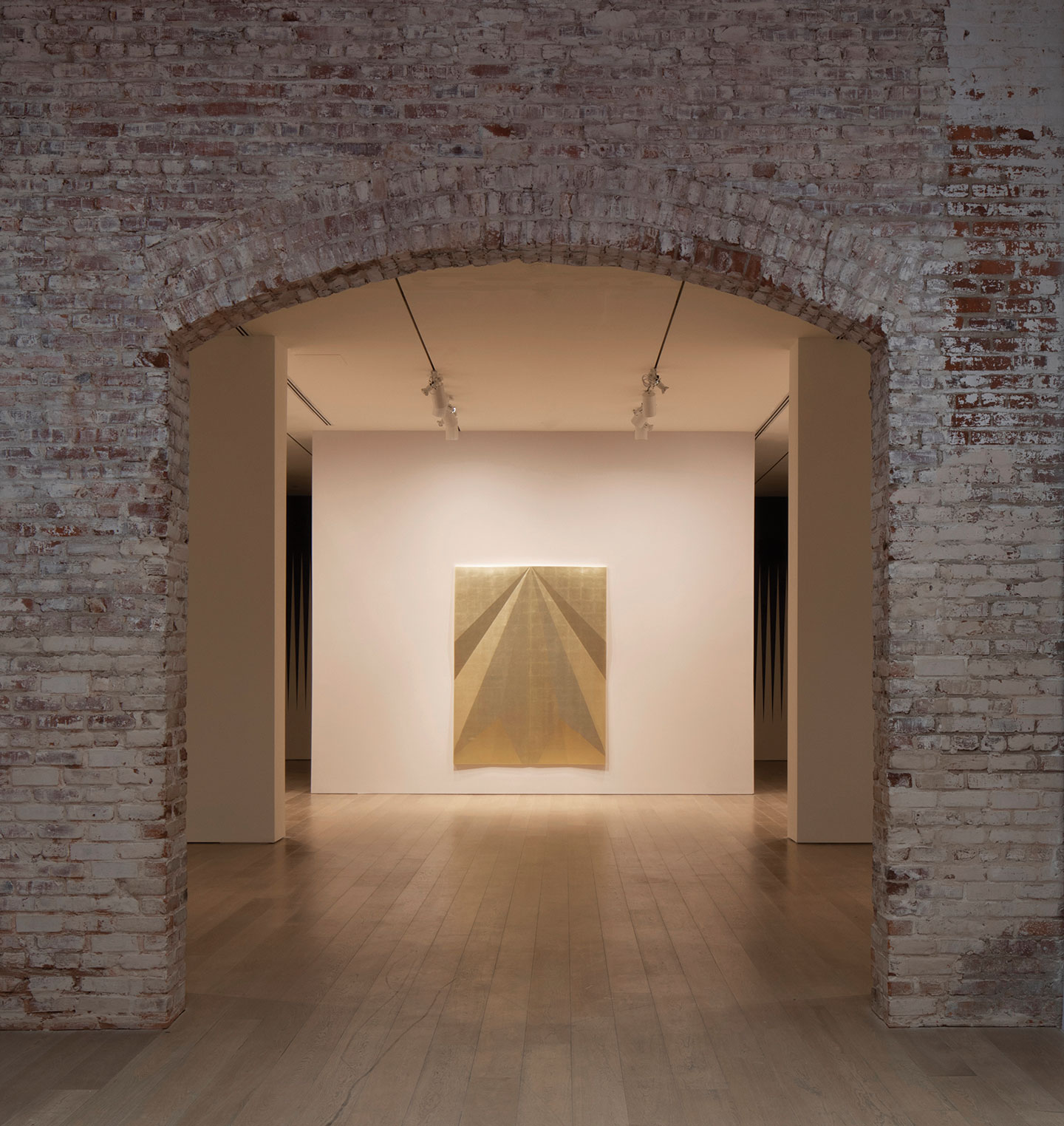« Reviews
Cathedral
SCAD Museum of Art - Savannah, GA
By Carlos A. Colón
The SCAD Museum of Art brings to Savannah, “Cathedral,” a multi-media sampling of the work by preeminent Mexican artist Gonzalo Lebrija. “Cathedral” opened to the public on February 21st, just in time for the 10thdeFINE ART celebration, SCAD’s annual program of exhibitions, lectures and performances. The work is on view through July 28th.
The exhibition brings together large-scale paintings, photographs, sculptures, a video, and an installation comprised of a mural on the four walls of a room, an inner sanctum, and the replica of a red Blic lighter standing on a pedestal in the center of the room. The lighter remains aflame for the duration of the six-month long event.
The paintings are the centerpiece of the exhibition. Lebrija uses gold leaf, metallic paint and subtle glazing techniques to create visual cues that many visitors will associate with religious painting. Yet the paintings remain devoid of iconography. They rely on geometric abstraction, emphasizing the triangle, a mystical symbol suggestive of the Catholic concept of the Trinity. The interplay between light and dark, both physical and represented, signify and elicit feelings of spiritual depth. The only overt reference to religion, the sacred, or a space for adoration, is in the title, “Cathedral,” illuminated and placed high above eye level.

“Cathedral” by Gonzalo Lebrija at the SCAD Museum of Art, Savannah, GA, (February 21, 2019 – July 28, 2019), installation view. Images courtesy of the artist and the SCAD Museum of Art.
The effect of the show is quite stunning. The construct generates an aura of sublime mystery. It feels like an encounter with the sacred and induces a contemplative state similar to what we might experience within the walls of its namesake. Still, the complexity of this concept-driven work goes deeper than the subtle management of formal elements to elicit a devotional state of mind. The effect, while subtle, is subversive. Hidden in plain sight among this radiant atmosphere of wonderment lies another aesthetic, another power of creative spiritual revelation. Within “Cathedral” lies Lorca’s duende.
You may not recognize the term, but you would likely recognize duende in the music of Leonard Cohen, or Tom Waits. It is a mysterious power, an emotional darkness. It is the feeling that arises from looking into the fathomless void. Lebrija references this void in his metallic iridescent paintings over black gesso, like Veladura Nocturna (Formax Cluster) [Night Glazing], both in the formal quality of a black painting, as well as in the title referencing the night sky and space. Mythological characters like the Norse Loki, and the North American Coyoteand Raven, embody aspects of duende. Through their mischief, they force us to look into that void and struggle with the weight of uncertainty, irrationality, and a heightened awareness of death.
Duende is a swift undercurrent in Lebrija’s work. Mischievous and aloof, he uses humor and play to undermine the sense of awe or exaltation present in the work. In this way, everything exalted is also mundane: the piece The Eternal Flame, is the replica of a common Blic lighter, all the paintings are iterations of unfolded paper airplanes (a throw-away toy), and the video piece, Catch My Fall, reminds us of our own experience of jumping on our bed. Lebrija’s titles are significant in creating this dual nature. Unfolded Planereferences the process of undoing the toy, but also of revelation. Referencing celestial bodies (like Abell-31, NGC-6369, and Mirach) draws our attention to the great void of space, simultaneously addressing their role as guideposts in the night sky, as well as their role in mysticism and mythology. Titles like The Eternal Flame, La Nuit, and Catch My Fall, might reference anachronistic but timeless pop songs by The Bangles, Salvatore Adamo, and Billy Idol.
Through this work, Lebrija manages to draw us in and lift us up. In that moment of levity and awe, we realize that there is no floor underneath our feet, or rather, that the cathedral is simply a construct designed to make us feel comfortable. It is a stand-in, not only for religion, but for human structures and systems. It is a revelation. Like duende, the exhibition undermines anything we take for granted. In “Cathedral,” we take for granted our feelings, our emotional response to the gallery-now-cathedral space, and to the beautiful radiant artwork that arrests us. It exposes, reveals, and renders us vulnerable.
Lebrija embodies the archetype of the trickster whose work is to point out the man behind the curtain. “Look!,” the trickster says, “at these men leading our nations.” The fallibility of our structures and our systems are revealed when we… we push paper on a daily basis but stand in awe when they are made into planes gilded in gold leaf.
(February 21, 2019 - July 28, 2019)
Carlos A. Colón is an artist, educator and writer. Currently, he serves as a Career Coach for painting and photography students at the Savannah College of Art & Design. He holds an MFA in Painting from SCAD, and undergraduate degrees in Drawing and Biology from the University of Puerto Rico.
Filed Under: Reviews



































Leave a Reply
You must be logged in to post a comment.